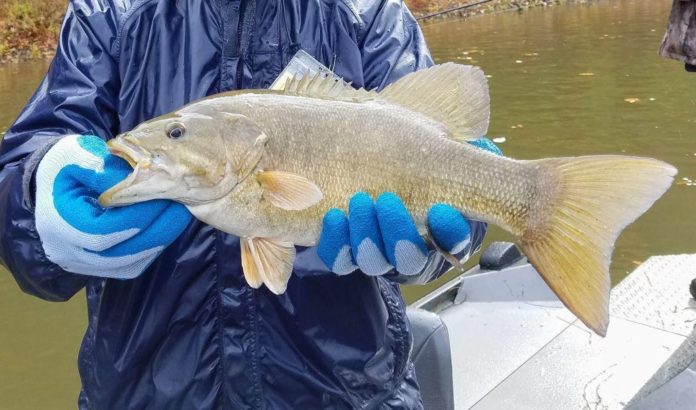This winter’s mild weather allows a host of open-water fishing options. Many exist in addition to what we have in our egion
UPPER POTOMAC RIVER SMALLMOUTH BASS: The mention of smallmouth bass fishing in conjunction with winter fishing might raise the eyebrows of some. But given the right conditions smallmouth bass are quite catchable in the chilled waters of late winter, quality-sized smallies especially. The extensive waters of the upper Potomac River provide a great venue to do so.
Above the tidal line near Little Fall, Md., the Potomac River is mostly a free-flowing river, interrupted only briefly but a cluster of dams constructed to divert water to the long defunct C&O Canal. Though the river’s smallmouth fishery has witnessed challenges over the years — fish kills in the early 2000s and more recent concerns regarding spring spawning success — there are plenty of adult fish to fuel a late-winter bronzeback outing.
40-degree water temperature is the unofficial pivot point of river smallmouth activity. When water temperatures are more than that mark chances are good you’ll get bit by bronze bass. Stack several unseasonably warm, sunny February days together and the action can be remarkable.
Expect to find Potomac River smallies concentrated in deeper, protected holes with mild current. Metal vibrating blade baits can be tops for duping semi-active fish holding in deeper water, as are finesse jigs like Ned Rigs, small tubes, and hair jigs.
Suspending jerkbaits like Rapala’s Husky Jerk excel when bass move shallow to feed. Just work jerkbaits slowly with lengthy pauses.
KANAWHA RIVER WALLEYES: West Virginia’s Kanawha River portrays an industrial look, but don’t let looks fool you. It harbors excellent fish populations highlighted by walleyes.
A tributary of the Ohio River, the lower 84 miles of the Kanawha are impounded by the Winfield, Marmet and London Locks and Dams.
The tailwaters areas of these three dams are the best-known walleye hotspots, not surprising in that walleyes will stack up below the dams during late winter and early spring, driven upriver by their instinctive spawning urge. Both shore and boat fishing opportunities exist, though boats are not permitted in the restricted area which runs perpendicular to the end of the lock chamber approach wall.
It’s typical for walleyes to gather at the mouths of feeder rivers and the Kanawha has several such as the Elk and Pocatalico. Rock/gravel bars washed out into the main river at the mouths of smaller feeder streams act as wing dams and often hold walleyes.
Kanawha Falls, located upriver of the commercially navigable river section, is the other primary walleye hotspot on this river. This natural barrier can stack up with both numbers of walleyes as well as some big ones.
The classic jig-n-minnow combo is a versatile presentation that excels in river walleye situations such as the Kanawha.
CANADAWAY CREEK STEELHEAD: The southern shore of Lake Erie is affectionately known as “Steelhead Alley.” New York’s Canadaway Creek is a worthy stop along this chrome-inspired passage.
Canadaway Creek enters Lake Erie near the towns of Dunkirk and Fredonia. It’s a moderately-sized stream, big enough to allow a hooked steelhead to do its thing, yet small enough for comfortable wading.
The steelhead portion of Canadaway Creek runs from the mouth up to Laona Falls, a distance of about six miles. Be alert for any private property posted against trespass and heed such. Easements arranged by the New York Department of Environmental Conservation provide public access and parking.
Streamers and egg patterns produce for fly anglers, often when fished in concert with an appropriately sized strike indicator. Spin anglers most often rely on egg sacks.
Lake Erie’s southern shore steelhead tributaries often rise and fall quickly. Savvy anglers that enjoy some freedom in their schedules carefully watch for the best conditions, which are often a receding creek following a higher water event. A USGS water flow gauge is available for Canadaway Creek and can be found online by visiting the agency’s water-data site.
Credit: Source link































